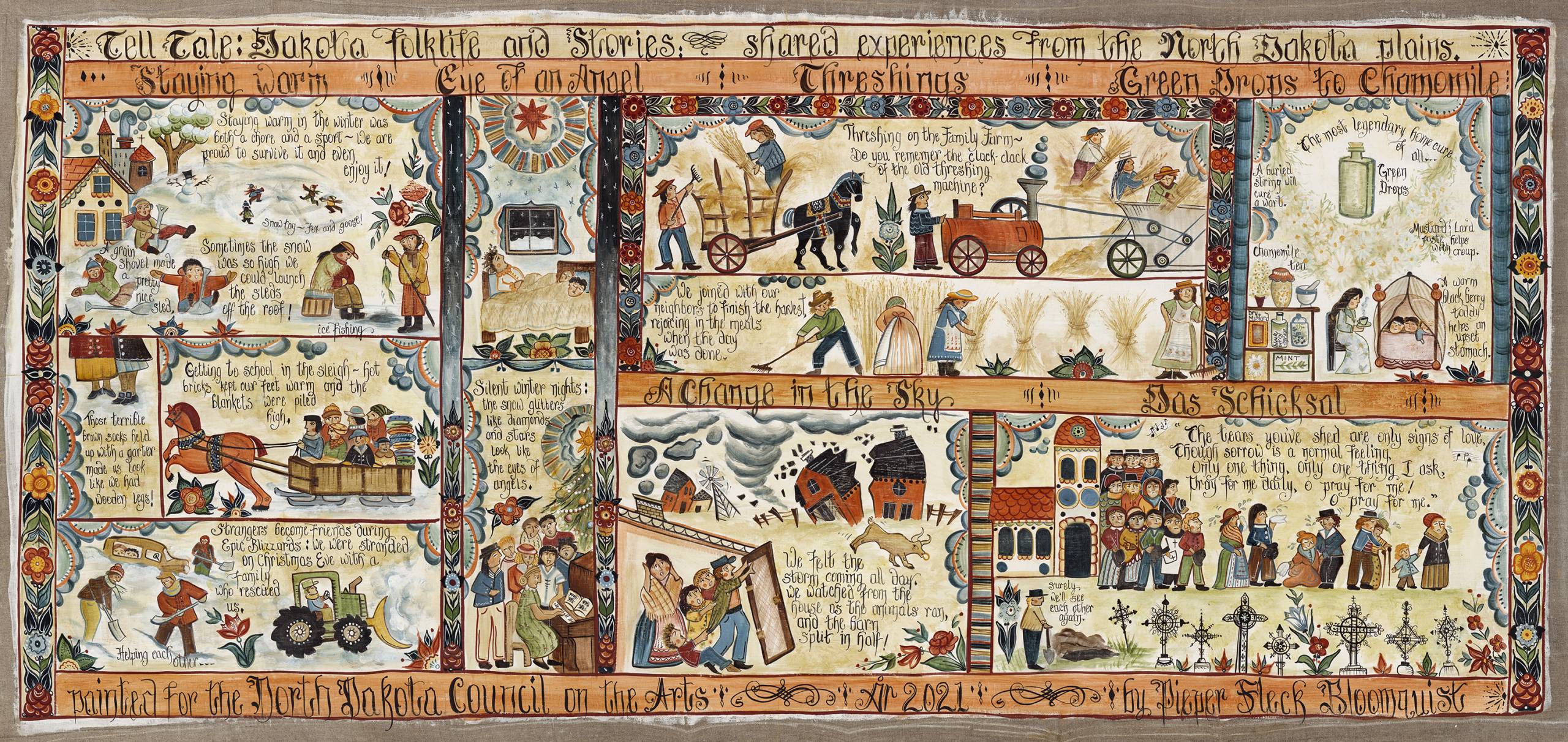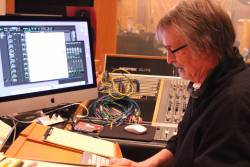
 From stories of blizzards to the man who climbed atop a windmill to play his accordion, TellTale: Dakota Folklife and Stories originate from, and are shaped by, interviews with senior citizens. Many of the storytellers are residents of elder care facilities. They are also culture-bearers, traditional artists, and everyday North Dakotans of all ages. Participants include elders from NDCA’s Folk and Traditional Arts Apprenticeship Program, traditionalists identified through fieldwork, musicians, storytellers, and Veteran auto-biographers.
From stories of blizzards to the man who climbed atop a windmill to play his accordion, TellTale: Dakota Folklife and Stories originate from, and are shaped by, interviews with senior citizens. Many of the storytellers are residents of elder care facilities. They are also culture-bearers, traditional artists, and everyday North Dakotans of all ages. Participants include elders from NDCA’s Folk and Traditional Arts Apprenticeship Program, traditionalists identified through fieldwork, musicians, storytellers, and Veteran auto-biographers.
This audio series, as a division of the Art for Life Program, has multiple goals. First, the intention is to celebrate the shared knowledge of life and lore in our state. Second, TellTales aim to improve the emotional and physical health of elders and their families through small group interviews around shared experiences, culture, and beliefs.
For elders in care facilities, TellTale’s storytelling process is designed to address loneliness, social isolation, memory loss, and sense of worth. A 2015 study found that social isolation and loneliness have dramatic detrimental effects on health and wellness resulting in a 29% and 26%, respectively, greater likelihood of early mortality. (Holt-Lunstad J, Smith TB, Baker M, Harris T, and Stephenson D. Loneliness and social isolation as risk factors for mortality: a meta-analytic review. Perspect Psychol Sci 10: 227–237, 2015.)
People get to know one another more intimately when they are in small groups and can discuss topics that are common among them. Reminiscing produces joy that releases health-positive endorphins. Hearing part of another person’s story from long ago sparks memories in those who may have memory issues, which results in their fuller participation in the discussion.

These elder conversations are conducted and recorded by ND Governor’s Award for the Arts recipients David Swenson (right) and Mike Glatt of the nonprofit organization Dakota Legacy. The TellTales are uploaded as podcasts to NDCA’s website and also shared with Prairie Public Radio to be aired on their Main Street series, with downloads available on their corresponding website.
The audio recordings have now sparked the creation of a small exhibit/health and wellness tool titled “TellTale: Creative Engagement and Wellbeing Through Visual Thinking Strategies and TimeSlips.” Inspired by six audio recordings of elders’ stories, artist Pieper Bloomquist created a Swedish bonadsmålning painting (above) depicting the lore of life described in them. The six stories from her painting were separated, enlarged, and printed on poster-board material. These visual aides, along with a touchscreen monitor, are

accompanied by twelve activity plans focused on two creative engagement protocols. The first is Visual Thinking Strategies (VTS), an inquiry-based teaching method increasingly used in medical settings that improves a participant’s ability to describe, interpret, and analyze imagery and information through observing and discussing visual art. The second is TimeSlips, a storytelling protocol open to all people but especially helpful for older people in various stages of dementia or forgetfulness. The emphasis is on replacing memory recall. Both strategies are very effective with children and in fostering intergenerational interaction.
Psychologist Dr. Clay Routledge, a nationally recognized expert in nostalgia, states that nostalgia seems to be a positive psychological tool, an antidote that naturally emerges to combat or cope with negative emotional and physical states, such as bad mood, loneliness, and a sense of meaninglessness. He continued by explaining that negative emotions can worsen health risks associated with aging, such as heart disease, diabetes, and arthritis. (Finding Meaning in One’s Past. APA PsycNet: 298-299, 2013.) In fact, a 2022 study states that merely looking at nostalgic images, like Pieper’s painting, reduces activity in parts of the brain associated with pain perception, thus reducing lower-level pain such as body aches and headaches. (Zhang M., Yang Z., Zhong J., Zhang Y., Lin X., Cai H., and Kong Y. Thalamocortical Mechanisms for Nostalgia-Induced Analgesia. Journal of Neuroscience. 2022.)
##
The recorded, aired TellTale conversations of elders are now being used to improve the wellness of other elders. For further information and to book this small exhibit/creative engagement tool for elder care organizations, facilities, or for intergenerational interaction in schools, contact Troyd Geist, tgeist@nd.gov.
###
TellTale is produced in partnership with Dakota Legacy, elder care and service organizations statewide, and North Dakota Council on the Arts (NDCA). This effort is supported in part by a grant from NDCA, which receives funding from the state legislature and the National Endowment for the Arts.
